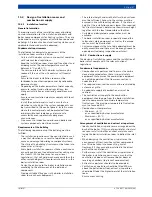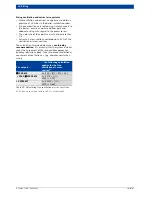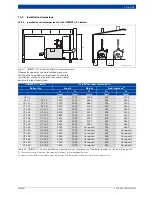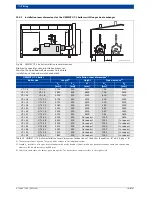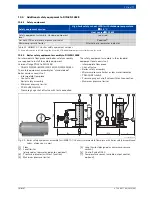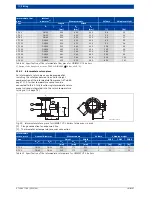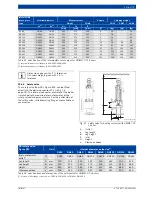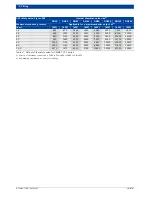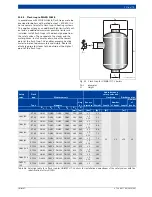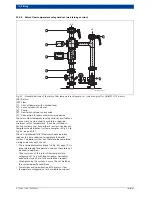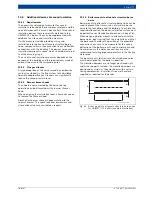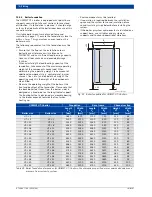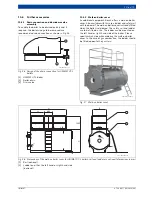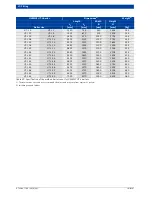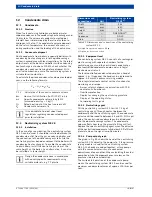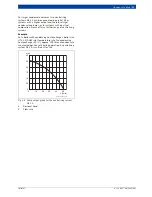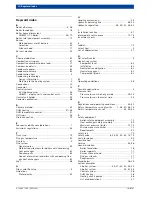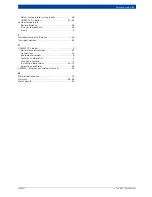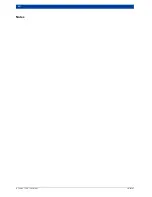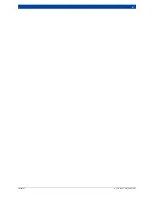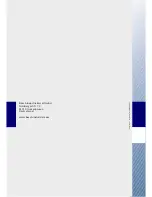
Flue system
|
81
6 720 807 794 (2013/04)
UNIMAT
11
Flue system
11.1
Requirements
11.1.1
General notes
As a basis for calculation and for sizing the flue system,
please refer to EN 13384. The following formulae can be
used to calculate the flue gas mass flow rates.
With oil combustion (CO
2
content 13,5 %):
F. 9
Calculation of the flue gas mass flow rate with oil
combustion
m
Abg, Öl
Flue gas mass flow rate with oil combustion in
kg/s
Q
F
Rated heat input in kW
With gas combustion (CO
2
content 10,5 %):
F. 10
Calculation of the flue gas mass flow rate with gas
combustion
m
Abg, Gas
Flue gas mass flow rate with gas combustion in
kg/s
Q
F
Rated heat input in kW
The rated heat output is the result of the selected rated
output and the associated efficiency (
page 28).
F. 11
Calculating the rated heat input
η
K
Boiler efficiency in %
Q
F
Rated heat input in kW
Q
N
Rated output in kW
The requirements of the flue system and flue gas routing
can be derived from the results of the calculations.
11.1.2
Special information for flue systems of boilers
with condensing flue gas heat exchangers
A correctly sized flue system is essential for the function
and operation of the boiler with condensing heat
exchanger. Only flue pipes approved according to
Building Regulations are permissible. When selecting
the flue system, also consider the requirements in the
approval document.
If positive pressure is to be expected within the flue
system and if the flue system is routed through
frequently used rooms, the entire flue must be installed
in a duct with secondary ventilation. Observe country-
specific requirements.
11.1.3
Material requirements for flue systems of
boilers with condensing heat exchangers
The material of the flue must be heat-resistant with
regard to the flue temperature that will occur, moisture-
resistant and resistant to acidic condensate. Among
other materials, stainless steel flues or other moisture-
resistant chimneys are suitable.
Flues are categorised into groups depending on their
maximum flue gas temperature (80 °C, 120 °C, 160 °C
and 200 °C). With gas condensing boilers, the flue gas
temperature can be below 40 °C, independent of the
maximum flue gas temperature. Moisture-resistant
chimneys must therefore also be suitable for
temperatures below 40 °C. A suitable flue must be
approved by the "Deutsches Institut für Bautechnik" in
Berlin.
With moisture-resistant chimneys, the draught must not
be more than 0 Pa at the chimney inlet.
m
Abg, Ös
Q
F
4,104 kg
10000 kWs
---------------------------------
×
=
m
Abg, Gas
Q
F
4,082 kg
10000 kWs
---------------------------------
×
=
Q
F
Q
N
η
K
---------
100 %
×
=

